Eurail Passes are famous as a way to save money while exploring Europe, but they are also confusing and often misunderstood. They are still an amazing money-saving tool for certain types of travelers, and not a wise idea for most others. Before Europe introduced dynamic rail pricing (like airfares, where the price varies depending on when you buy it), a Eurail Pass was an easy way to save money since all tickets had fixed prices that were generally fairly expensive. These days most travelers can save far more money just by buying their train tickets at least a few weeks in advance.
That said, Eurail Passes are still great for longer trips and especially for people who like to make plans as they go. Dynamic rail pricing made advanced tickets much cheaper, but it also made last-minute tickets MUCH more expensive. Below we will discuss Eurail Passes and whether they are a good idea for your trip or not.
Disclosure: This is a reader-supported website and some of the links are affiliate links where a small commission is paid to help keep this site going.
Note: This article was written in 2012 and has been continuously updated since then, so all information is current as of April, 2024.
Eurail 2024 changes: New countries and a mobile version
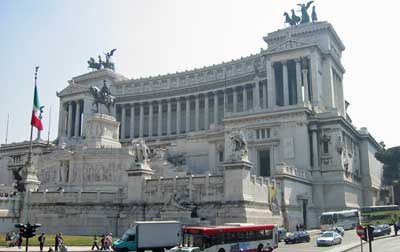
Aside from that it’s just the normal fact that they have updated the timetables as of December 2023 and have a few promotions going on, but those usually don’t happen over the busy summer season.
Eurail passes are now available in a mobile version
Until very recently, Eurail Passes were only available in paper form and they were quite confusing at first. You’d get a pass with a series of empty boxes on it and you’d need to enter your trip before you’d use your pass each day and then have the first conductor verify it. If you lost your ticket (and this was not uncommon), it was a whole ordeal to attempt to get a replacement.
Again in 2024 Eurail offers a fully mobile version that is delivered instantly to your mobile device with no delivery fee. And if you somehow lose your phone, you can resume using your Pass on your replacement with no extra headache. This is MUCH more convenient in every way and as long as you can keep track of your phone you’ll always have your train pass handy.
If your trip will be 2 weeks or less, a Eurail Pass probably won't be worth it
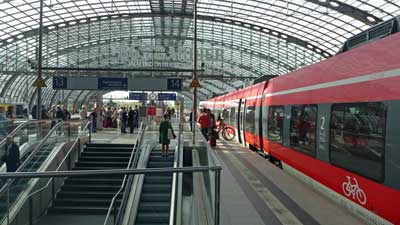
Eurail Passes are ideal for travelers on longer trips, and especially those who don’t want to plan all of their destinations and dates far in advance. If you have your itinerary pretty much planned out and you don’t require much flexibility, you’ll be far better off just locking in your dates and buying your train tickets as early as you can. Again, they can be surprisingly cheap if you buy 2 to 4 months out.
If you are age 27 or younger, a Eurail Pass is probably worth it

With this in mind, if you are lucky enough to still be 27 or younger, you should seriously think about getting a Eurail Global Pass Youth, partly because the sense of freedom instantly gets more expensive at age 28. The age cutoff was 25 until recently, so this change is a great deal for anyone who will be 26 or 27 at the start of their trip.
You aren’t guaranteed to save money by buying a Youth Eurail Pass, but chances are good that you WILL save money and you’ll definitely save a lot of hassle as well. Especially now that Eurail Passes come in a mobile form, it’s even that much more convenient to just hop aboard any train that is about to leave the station and not worry about buying or even having a ticket. Especially for young people, it can be really fun and exhilarating to literally just walk into a train station with your backpack and look at the departure board and then decide where to go at that moment.
If you are age 60 or over, a Eurail Pass could also be great value
Another fairly recent change is that anyone who is 60 years or older at the start of the use of a Eurail Pass now gets 10% off the normal adult fare. That new discount is going to make this a great value for many travelers who might have been on the fence about buying a full-price pass before.
>>>Check prices on Eurail Passes
If you are planning on traveling in 1st Class anyway, a Eurail Pass is probably worth it
Most 2nd Class trains provide similar comfort and legroom to Business Class airline seats, or at least close enough, so for most people it’s not worth the added expense for 1st Class. However, if you are rich or elderly or fear contact with strangers, a 1st Class Eurail Pass is probably worth it no matter what.
Not only do you get much more comfort and legroom in 1st Class, with only 3 seats across instead of 4, but there is another advantage to 1st Class on European trains. Since it’s mostly business travelers and wealthy people traveling in 1st Class, the carriages are almost always mostly empty except in the mornings and late afternoons between large cities. In 2nd Class the only available seats might be two seats in an 8-seat cabin with all the other seats taken up by a loud family or a group of rowdy friends. In 1st Class you are all but guaranteed a peaceful ride, and usually plenty of empty seats from which to choose.
A hidden Eurail Pass benefit: Making extra stops on travel days for free
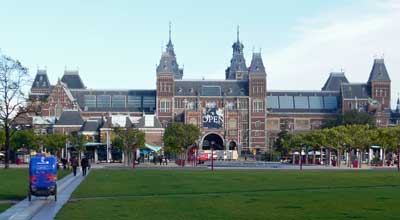
Brussels in particular is one I recommend a short stop in because the small historic center around what they called the Grand Place is amazing and gorgeous, while the rest of the city is rather boring by European standards. With a Eurail Pass you can jump off the train in Brussels and explore the city center for a few hours (luggage storage is cheap and easy) and maybe have lunch, and then hop on a later train to complete your journey to Amsterdam. There are opportunities like this on many if not most trips between larger cities, and if you buy the point-to-point tickets you have to stay on the train you booked.
Another example is the high-speed train between Barcelona and Madrid, which takes about 2.5 to 3 hours in each direction. There are some interesting cities in between, but in this case you could take a morning train from Barcelona to Madrid and then check into your accommodation, and then hop on another train from Madrid to Toledo, which takes about 30 minutes and costs €14 each way. Toledo is a historic and fascinating town, but it’s also pretty small and you can explore the main sights in an afternoon. With a Flexi Eurail Pass where you buy a certain number of travel days, you can save more money by adding on these sorts of nearby stops on travel days.
If you'll be touring major cities within ONE country, a single-country pass might be perfect, and Second Class passes are available for all ages
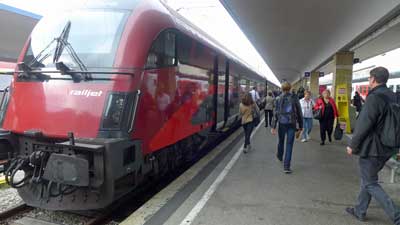
Single-country passes are still available and they MIGHT be good value for you, but it depends on which country and how much traveling you’ll be doing. If you plan on going all over a larger country such as Germany, France, or Spain, and especially if you like to make plans as you go, a Single-country pass for one of those might be your best deal. On the other hand, smaller countries (such as the Netherlands) or countries where train tickets are already fairly cheap (such as Italy) might be harder to get value out of. Long story short, for single-country passes you really need to check fares of the places you plan on going and see how they add up compared to the pass.
>>>Check prices for Single Country Passes
Eurostar (between London and Paris or Brussels or Amsterdam) tickets are now included for Eurail Pass holders for a €30 reservation fee
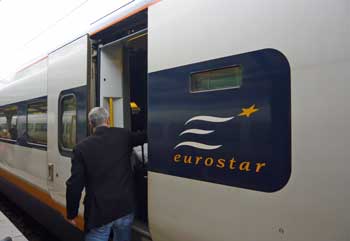
Our recent tests show that Eurostar fares one-way from London to Paris can be as low as €49 if you book about 3 months out, or as expensive as €214 for the same seat if you wait until the day of travel to buy. Round-trip/return tickets can be even cheaper if there is a promotion running.
>>>Check Eurostar prices
If you are on a really low budget, a Eurail Pass isn't a good idea
Here’s the thing. As we’ll discuss below, there are many potential benefits to Eurail Passes, and they will often save you money, but they do cost a lot and they only really save you money when traveling in the more expensive countries.
So let’s say you have a flight to Rome and then US$2,000 to last you a month after you arrive. Buying a Eurail Pass before you go would help you see a lot in that month, but you’d practically need to sleep in parks for your funds to last the whole time. You’d be better off moving slowly in the southern countries, or just in Italy itself, as a way to have the best holiday on your budget. You might also be tempted to use a Eurail Pass mostly on night trains so you can save the cost of a hotel or hostel, but those aren’t ideal for most of us.
The cheapest way to get around Europe by rail is to buy all train tickets online at least a couple months in advance. The fares are low, but they are non-refundable and non-changeable. See how far in advance you should buy train tickets to get those attractive fares.
If more than a little of your travel will be in eastern Europe, a Eurail Pass isn't a good idea
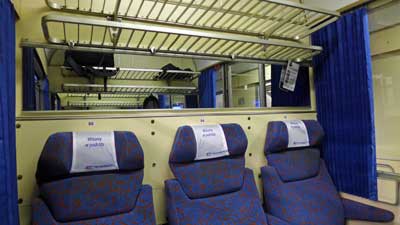
The good news is that the trains operating in this region, and the buses that operate alongside and/or where trains aren’t running, are quite cheap. So if any significant part of your trip will be into this region, a rail pass doesn’t make sense.
Basic types of Eurail Passes
Long gone are the days of the simple options, replaced by specialized passes that are meant to appeal to different styles. It should be pretty easy to figure out which is best for you, and then keep going down the page to decide if it’s worth it at all.
Eurail Global Pass – 4,5, or 7 days within 1 month or 10 days within 2 months
Until recently the minimum number of travel days with 10 days within 2 months, but now you can buy as few as 4 days within 1 month for about €200 to €250 (for first class). This can actually be an interesting strategy if you are planning many shorter and cheaper trips (like within Italy or Eastern Europe), and also 4 or 5 longer trips such as Berlin to Amsterdam. This way you can buy only 4 or 5 travel days and only use them for your most expensive travel days, and just pay as you go or buy cheap advance tickets for your other journeys.
Eurail Global Pass – 15 to 90 consecutive days
This variation allows for unlimited travel on the system for between 15 and 90 total days. They are really only a good idea for people who are certain they are going to travel very often, with much of it being in the north of Europe. The problem with them is that if you really try to get your money’s worth, you will probably ruin your trip by spending too much time on trains in general. On the other hand, if you will be in Europe for 2 or 3 months and plan on traveling around a lot, you can get a LOT of use out of a longer pass. The 3-month pass is around €900 so it’s literally about €10 per day. Imagine going back and forth between Berlin and Munich or Barcelona and Madrid for €10 per day!
One Country Pass
Obviously these are for travel within one country only. Again, they can be great deals if you plan on extensively moving around one particular country.
Where to buy your Eurail Pass
Eurail Passes are cheapest and easiest to buy online, primarily from two main sources which offer all the same products at the exact same prices:
This is a reliable company based in the Netherlands but with fulfillment offices in the US and Ireland. Price of Travel is a partner with this company, and if you use the links of this site we earn a small commission to help keep this site online. Eurail.com is usually cheaper than RailEurope (discussed below) by the way.
They were founded in the 1930s and are based in New York, but owned primarily by the French and Swiss rail companies. They offer free shipping (2 to 3 business days) on all orders of US$399 or more, although now that a mobile version is available, this is meaningless. Price of Travel is a partner with this company, and if you use the links of this site we earn a small commission to help keep this site online.
Reservations on European trains for rail pass holders
For most of the fastest trains between major cities you’ll need to reserve a seat even with a rail pass. It can usually be done just before you leave and the cost is usually around €5. Here’s a full list of which European trains require reservations and which don’t.
Reservations are required on all intercity (longer distance) trains in or involving France, Spain, Switzerland, and Italy. For most trains in Germany, Austria, Netherlands, Belgium, and most of eastern Europe, you can usually find trains that don’t require seat reservations. Often, if you don’t leave until after 9:30am or so, you can ride on any train with no seat reservation, but you have to research each leg to be sure.
How to determine which trains require seat reservations, and also get schedules
You can click on the link just above this section for a list of countries and their seat-reservation policies, but in some cases it’s actually a bit more complicated than that. For example, you can generally ride without a seat reservation on fast ICE (Inter City Express) trains in Germany if you depart after 09:30 in the morning. They do this to free up seats for business travelers who pay full fare, and they don’t mind filling up seats with rail pass holders on trains leaving a bit later.
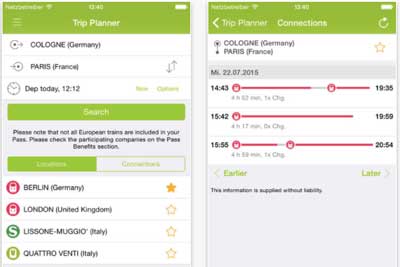
Night trains in Europe are making a comeback
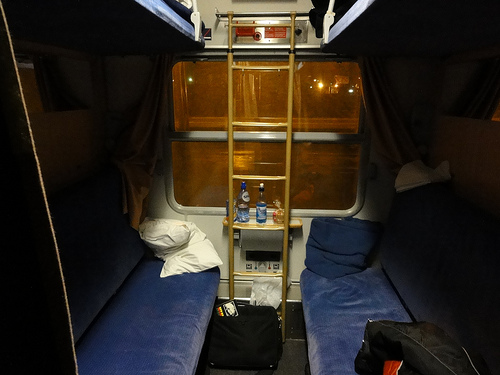
Fast forward to 2024 and night trains are not only expanding service, but they are very trendy. Some of it is nostalgia for the older way of getting around, but most of it is for environmental purposes combined with European hatred for the “low cost airline” experience with RyanAir and Easy Jet etc.
Personally I’m still not a fan of night trains because I find it difficult to sleep on them since they often get decoupled at interim stations in the middle of the night and then coupled onto other trains coming from other places, and I can’t sleep through any of that. But still, they are worth looking into and they are fun to try at least once.
A bit of warning that they tend not to be cheap and even if you have a Eurail Pass you’ll almost certainly want to book a sleeping cabin with a bunk or couchette, and that will come at an extra fee. On the other hand, if you are the sort of person who can sleep sitting upright in a normal seat, then that won’t cost any extra on most overnight trains.
Factors to consider when thinking about any Eurail Pass
Assuming you know which Eurail Saver Pass option is the best one for your type of trip by now, we’ll go over the main factors that should help you decide whether it’s the best idea for you.
Eurail Passes are best for standard ‘medium length’ journeys
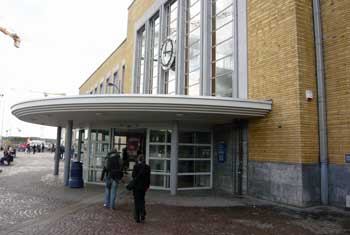
However, if you are determined to travel between Rome and Paris, it’s about a 14-hour journey that will almost certainly be overnight. In this case, a cheap plane ticket is probably better, although taking shorter hops on the train is even better, so spend a day or two in Milan or Lyon on the way instead.
And of course, if you prefer to stop in various small towns between the big ones, then a Eurail Pass won’t pay off, except for the traditional kind for unlimited travel in a given period.
Eurail Passes are better value in northern Europe, France, and Spain, and poor value in Italy
Once you do a bit of research you’ll quickly learn that train tickets (and almost everything else) are much more expensive in Germany, Netherlands, Denmark, Sweden, Norway, and Finland than they are in Greece, Italy, Portugal, and Spain. With this in mind, the regional passes can make sense if you are spending time in the south, but the Global Passes almost certainly won’t. Train tickets in Spain used to be fairly cheap, but in recent years they’ve added new high-speed trains between the major cities, and these are quite expensive.
Unlike most other countries, Italy really subsidizes its train tickets so they are quite reasonable even on travel day, and very cheap if you buy a month or more in advance. For example, you can go between Rome and Florence for around €49 if you buy on travel day, and as little as €19 if you buy well in advance. In most other countries, fares are double or triple that much for similar rides.
So consider your planned itinerary. If more than half of it is in the Mediterranean countries then look into a Regional Pass or just buy tickets as you go, because they tend to be pretty cheap. But if you are planning on spending at least half your time in Paris and places to the north of it, then a Eurail Pass is probably a money saver because those tickets are expensive.
Trains are almost always better than planes
Flying sucks, even in Europe
Until you’ve experienced the joy of traveling around Europe by train you might be tempted to “maximize” your time by flying low-cost airlines between each city. This would be a mistake. In order to get truly cheap airfares you have to purchase long in advance, buying non-refundable tickets. You might also have to commit to flights in the very early morning or in the late evening, because cheap tickets on convenient flights sell out quickly.
And again, most European airports are around an hour outside of the city. They are often on the main train lines, which helps, but still you have to deal with the madness of security and also try to get there at least two hours early. From one city center to any other city center it’s about 5 hours minimum, even if they are close, and those are pretty miserable hours.
Train travel is a positive experience

Not only are all the seats comfortable on trains, but you also have an interesting view most of the time. Better still, trains deposit you in the heart of every city, which is usually the neighborhood with the cheapest hotels and food. It’s a wonderful feeling to step off a relaxing train ride, buy a hot dog or sandwich at a local shop, and then be in your hotel room only about 10 minutes later.
Eurail Passes are better than train tickets alone
As someone who enjoys the process of crunching numbers and looking for value, I have to also mention that I’d buy a Eurail Pass even if it seemed like it would cost a bit more than the individual tickets. With a pass you get an extra element of freedom that is worth a lot more than you might expect until you’ve used one.
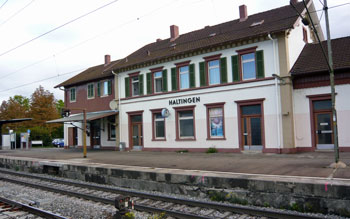
Let’s say you are heading from Amsterdam to Hamburg tomorrow morning. The 09:00 train you planned for might seem a bit ambitious after a long night out, so you can instead opt for the 10:00 or 11:00 train. As long as you walk into Centraal Station 10 or so minutes before departure, you are on. If you are flying you can’t change your ticket, and if you are buying train tickets as you go you have to be in line at the international desk at the train station at least 30 minutes early, and even then you might miss it if they are busy.
Freedom and getting to feel like a big shot
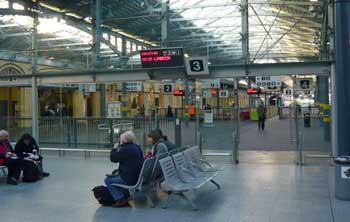
Let’s say you are staying at a hostel in Brussels, and two groups of new friends suggest that you go along with them to their next stops. One group is going to Bruges, which is a short and cheap journey, so you can join them by buying individual tickets (unless you have the unlimited pass, making it free). Then you restart your trip from Bruges, on to your next destination. The other group is headed to Berlin on a night train, which is long and expensive, but with a Eurail Pass you don’t even have to think about the cost. On you go, just like a rich person.
Buying a Eurail Pass is great for those who might run out of money
We all know people who keep meticulous track of every penny they spend, and who are always putting money away for a rainy day. And we all know people who can take a US$100 “entertainment fund” and burn through almost all of it in just a few hours. For the first type of person, a Eurail Pass can help you keep track of expenses, but it’s really the second type of person these are best for.
It’s sad to hear about people who have big plans to see their dream destinations, but they run out of money for transportation halfway into the trip, so they have to just stay put until they fly home. It happens. Locking in your major transportation costs before you leave home, and probably saving money in the process, is a wise move for anyone who isn’t as disciplined as they’d like with their money.
>>>Check prices on Eurail Passes
Bottom line: If you want to keep travel costs down, your choices will usually be a Eurail Pass or buying tickets at least a month or more early
In the last few years, almost every long-distance train ride in Europe has switched to a pricing system similar to low-cost airlines. In other words, tickets go on sale 2 to 6 months ahead of time at very low prices, and they keep getting more expensive as the train fills up and the date approaches. For most trips where a rail pass is possible, this is how things stack up:
Cheapest possible way: Buy advanced (non-refundable, non-changeable) train tickets at least 30 days in advance
Next cheapest way: Buy a Eurail Pass and make seat reservations as you go, usually only a day or less in advance.
Most expensive way: Buy train tickets as you go, or less than a week in advance.
Thinking about it this way should make the choice a bit easier. If you are the type who likes to plan each day and travel segment long before you even leave home, then buy tickets online for the best prices. This can be the best strategy for most shorter trips (10 days or less) because you simply don’t have enough time to change many things as you go anyway.
Buying a Eurail Pass won’t be quite as cheap, but you are buying a LOT of flexibility with the extra money. If you dream of making up your plans as you go, or even making up your plans just a few days in advance, this is almost always your best bet.
But if you wait too long, and just show up looking to buy train tickets as you go, they are going to cost a fortune. As recently as only a few years ago all seats would be the same price on many rail systems, so you could always just wing it. When each country computerized its rail systems so they can sell advanced tickets cheaper, they also had to keep track of seat reservations, so the whole pricing structure had changed to favor advanced ticket buyers and rail pass holders over those who’d prefer to just hop on any train as it is leaving the station.
Have a rail pass or itinerary question of your own?
It wasn’t planned but scores of people began asking me rail pass and itinerary questions at the bottom of this article and a few others. I’m happy to keep answering them and now I’m trying to organize them better as well so they are easier for other people to find.
If you have a question about specific types of European rail passes, please ask it in the comments below.
But if you have a question more about a European itinerary or other non-rail-pass questions, please click over to the European itineraries Q & A article and ask in the comments of that one.

Thanks again, Roger.
I hope I can repay you in some way for all your help. Please do let me know if there is anything in Asia that I can help you on travel info.
Back on Europe trains:
1) Can I choose my side of the seat on left or right upon online reservation ?
2) For those that reservation is compulsory, if I missed to do so and disallowed into entry, how short a time that I can do it over the counter before departure ?
3) I checked on the train websites, it’s quite complicated compared to airlines website. All the city have many stops of different names; let’s say if I made a choice by mistake and reservation made, will I be charged a penalty if I wish to get down at a different station ?
4) For overnight journeys, if I use a select or flexi pass, I can take a trip after 7pm that arrives after 5 am in the morning and continue to take other trains in the day, and still counted as 1 day used, am I right ?
5) I read that most train seats and berths do not have a charger point for electricity, are there much improvements now ?
Thank you again.
Lee,
Thanks for the offer and I’m actually doing another Asia trip this coming winter. 🙂
1) Yes, if you request one side of the carriage or the other when you book a seat reservation, you’ll usually get it.
2) If you buy tickets as you go then they all come with a seat reservation. If you buy a rail pass then you can usually buy a seat reservation right up until the time the train is pulling out of the station. At peaks travel times (early mornings on weekdays and Friday afternoons) some trains are full so you’d have to wait until another one goes (usually an hour or two later) that has available seats. If you hop on a train with no reservation when one is needed, you can buy it from the conductor when they come to look at your tickets, but it will cost you around €10 extra as a penalty. Getting a seat reservation usually only takes a few minutes in the station.
3) I know the train system looks very complicated before you get there, but I think once you are underway it makes much more sense. As long as you double-check each ticket or seat reservation while still at the window, I’m sure it will all work out. There are some small towns with similar names, like in Italy there is a Verena, Vernazza, and Verona, and they are all tourist towns. But for the most part you’ll be getting tickets to the same famous towns that all the other tourists are going to, so the ticket agent won’t give you a ticket to some obscure town with a similar name that tourists never visit. All of that said, if you reserve a seat to one city and choose to get off at another, you might have to pay a bit extra if you aren’t careful.
4) Yes, if you use a Flexi-pass and take a night train leaving after 7pm, then you can ride around on the trains the whole next day and it still counts as only one “travel day.”
5) All of the newer and fancier trains have power outlets and some even have USB plugs. But the older trains and local trains usually won’t. It also depends by country, with rich countries having better trains than the other countries. It’s getting better, but on any given train ride you can’t assume that it will have a power plug.
Have a great trip. -Roger
Hi Roger,
I am traveling Europe for 3 weeks in a week!
I need help on deciding the best train pass for me and my traveling partner. We are 21 & 22 and are back packing.
We have a round trip from New York to Milan starting May 7th.
We are flying the same day to Amsterdam May 7th then want to travel down from amsterdam through Germany and Italy. We want to hit all the major cities in these countries.
With a week away we do not have much planning done, so any advice on what train pass or how to travel through these countries would be great!
Kristina M,
It’s hard to give you advice with confidence without knowing how far you plan on traveling and how often during those 3 weeks. But since you haven’t yet done much planning, I guess you probably don’t know yourself. My recommendation would be to shoot for 7 or 8 cities within those 3 weeks. If you try to see more places then you’ll be spending almost half of your days in transit, and if you go slower then you are going to miss some big highlights.
I’ll start with an itinerary that would be really nice for you, and you can think about it and tweak it to fit your own tastes.
Amsterdam 2 or 3 nights
Berlin 3 nights
Prague 2 or 3 nights
Munich 2 or 3 nights
Salzburg 2 nights (optional) or just go straight from Munich to
Venice 1 or 2 nights
Florence 2 or 3 nights
Rome 3 nights
Train to Milan for your flight home, and you might stay in Milan 1 night
That covers all of the best stops in the countries you mentioned, and adds Prague and possibly Salzburg, which are also both first-rate cities for first-time visitors to Europe. If you do an itinerary very close to this, then I’d highly recommend a Global 5 Days in 2 Months Youth Select Pass, which will cost around US$340 each, meaning that each ride will cost around US$68. That might not sound too cheap, but if you try to buy most of those first few tickets on travel day they would average probably US$100 to US$120 each.
(By the way, I just checked the prices of those rail passes and the website was trying to sell me a 10 DAYS in 2 Months pass instead of the 5 DAYS in 2 Months one that you want. Make sure it’s offering the correct one before you buy.)
The absolute cheapest option to do it would be to buy all of your train tickets online as far in advance as possible. Unfortunately, even if you bought them all today, most of them would still be fairly expensive, and you’d be locked into a fixed schedule for your whole trip. The second cheapest and most fun way is to buy the Eurail Pass and make up all of your plans as you go. The most expensive way to do it would be to make plans as you go, and buy your train tickets just before the train leaves.
The good news is that once you get into Italy, the train tickets are fairly cheap even with no rail pass, especially if you follow the efficient route I mentioned. So you could basically wing it until you get to Venice, using the Eurail Pass for each ride. And once in Venice you can buy the tickets as you go. You can save money by buying a few days in advance if possible, although you can still get some pretty cheap tickets on travel day (in Italy) if you are willing to go at weird hours (late afternoons and evenings).
More good news is that on that route you wouldn’t even need seat reservations until you were on your way to Venice, and maybe not even for that one. In other words, in the first countries on your list you can just head to the train station and hop on the next train going and find a seat. But in Italy the seats need to be reserved at a cost of around €10 each (which includes a beverage) or €5 on other routes. If you buy tickets in Italy as you go, they will cost between €20 and €40 each, including the seat reservation. You might actually need seat reservations on those first handful of train rides if you want to leave before 9am, but usually the trains after that are half empty and you can just climb aboard. It’s worth checking as you go, just to be sure.
Hopefully this helps, and I’m sure you’ll have a great trip if you do something along these lines. As always, feel free to follow up with additional questions if you have them. I love this sort of thing and I’m happy to try to help. -Roger
Hi Roger,
This website is fantastic. Kudos to you!
I am travelling with my wife and 2 years old daughter. My plan is 3 nights in Paris, 3 nights in Rome and 5 nights in Zurich (Will visit Interlaken for a couple of days to and fro).
I am planning to buy 4 Country Select Pass. What is your suggestion on this? Secondly, I would like to know if the Select Pass covers Intercity Trains, Metro and Local Trains also as I would like to explore the entire trip on locomotives.
Your quick advice will be highly appreciated.
Regards,
Huzefa
Huzefa,
Thank you for the kind words. I really don’t think a rail pass would be useful to you, and there aren’t really any passes that cover this few rides.
First off, I am hoping and assuming that you have a specific reason to visit Zurich at all, and especially for 5 days. If not, have a look at my article on where to go in Switzerland for some information and alternatives.
Another challenge is that Paris to Rome is a bit over 11 hours on the train (and a bit over 8 hours from Zurich to Rome), and that’s a very long time even if the scenery is nice like that. Even with a rail pass, you’d have to pay an extra €30 or so for a seat reservation on a French train, so it’s not a great deal. Honestly, I’d fly from Paris to Rome, and fares start at around US$50 one-way, including on Air France. Or you could take a train from Paris to Zurich (4 hours) and then fly to Rome from there. That flight starts at around US$100 each way and has a plane change, or you could take a train ride from Zurich to nearby Basel and fly nonstop from there to Rome for around US$75.
Again, there isn’t really a rail pass that would work well for what you’ve mentioned, so you’ll want to buy as you go. Train tickets and flights will be cheapest if you buy soon, and the price will keep going up as the travel date nears. The exception to this is train rides within Switzerland (like Zurich to Interlaken), which are the same price no matter when you buy.
And since you asked, rail passes ARE good for all trains including regional and local trains, but they aren’t good for metro/subways or trolleys and that sort of thing. The best example of this is in Germany where each large city has an “S Bahn” (suburban rail) system that is covered by rail passes, as well as an “U Bahn” inner city transit system that is NOT covered by rail passes.
Sorry this isn’t the information you were hoping for. Best of luck with whatever you decide, and feel free to follow up if you have other questions. -Roger
Roger,
Thank you so much again. I have booked some Norway trains and selected those with transfer times of more than an hour, to be safe. I have booked overnight trip but I did not pay extra for a sl. Does that mean it is allowed to travel overnight just on seat ?
I have the following questions in order to decide further:
1) Is train strikes really so serious or common for Italian trains ? My itinerary will be tight, so cannot afford to miss connections.
2) Which are the countries’ trains that I do not need to make reservations ? I don’t mind using slower trains, with a Pass and I try to avoid using the website or pay extra for reservations, quite a hassle for me,
3) Which countries’ point to point tickets are priced the same whether you book early or current ?
4) How do you secure your belongings in train travel ?I just carry a 7 kg cabin size bag but I am worried to leave it anywhere unprotected while I fall asleep, any protection measure can be be taken ? I have never travelled on trains in Europe and this is my first time.
5) Which are the user friendly train websites to check fare prices ?
Thank you.
Lee,
I’ll try to answer your questions in order…
I’m not sure what you mean by not paying extra for a “sl”, but yes, most of those overnight trains also have a carriage or two of just normal seats, and those typically don’t require a supplement. If you think you can sleep okay in a normal seat, it might be worth it.
1) Italian train strikes are common at times, but they are almost always announced way in advance. Right now it looks like 2 partial strike days are scheduled for May, 2015, and nothing yet beyond that. However, about half the trains usually still run on those days, and usually the popular intercity routes go, at least part of the day. In other words, you’d be very unlucky to be traveling on a strike day, and even if you are, you would probably still make it within a few hours of your original plan. And of course, you’ll know in advance so you can already plan to go a day earlier or later or something. I’m pretty sure that they honor tickets for strike days for alternate trains.
2) You can usually travel anywhere within Netherlands, Belgium, Germany, Austria, and Switzerland without seat reservations. In many cases the trains popular with business travelers (leaving 8am to 9am) will require a reservation, and then the hourly trains on the same route for the rest of the day will not need a seat reservation. In France, Spain, and Italy, most (but not all) of the intercity trains will require a seat reservation.
3) Switzerland is the only country that I’m aware of that still has fixed price tickets between the major cities. For all other countries, those faster intercity trains start out cheap and go up in price as more seats are sold. However, in most other countries the regional and suburban trains typically go at fixed prices (and they stop in most stations so they are usually slow). You can actually go long distances by combining regional trains, as long as you are in no hurry at all.
4) You can almost always stow your bag on a rack immediately above your head on European trains. Some regional trains have a small rack above that is only large enough for day packs, and in those cases there is a luggage area at the end of the carriage. I actually got a large backpack stolen from one of those in Wales not long ago, so I’m even more careful now. I travel with a normal medium size backpack full of clothes and whatnot, and a smaller computer bag with all of my valuables in it. I ALWAYS keep the computer bag around my neck during the day, even when I go to the bathroom. If I’m sleeping on a train, I always pay for a couchette, and I keep my bags on the bunk with me, with my computer bag usually near or under my pillow. There are little locks you can buy, and chains that can chain a bag to the rack, but generally these trains are very safe so I don’t worry much. The incident in Wales was on a long ride during the day, and it was only because I stowed a big bag at the other end of the carriage and didn’t keep a close eye on it. I’ll always stow even my larger bag close to me so I can watch it in the future. And also I’ve taken hundreds of train and bus rides around the world, and that was the only incident. As long as you are careful, your stuff will all make the trip with you.
5) Bahn.com is probably the easiest single website, but it doesn’t have fare information for many trains outside of Germany, so I typically go to the official country website for the country I’m traveling in or to. You’ll find links to all of them on this article about buying European train tickets in advance.
I’m sure it’ll be a great trip, and feel free to follow up again if you have more questions. -Roger
Hi Roger,
Thank you very much for your quick reply and all your helpful information. If I have know your website earlier, I would not have cancelled by last Europe plan 2 years ago. I find it so stressful to plan on a budget for Europe and I have been badly commented by other members of “well-knowned” travel forum, most of which was due to my “too many places to visit” questions. While I need a few days to digest more from your replies to others in order for me to finalise my itinerary, I have an urgent question here that needs your reply(before some air tickets run out).
Can you please look into the nsb website and help explain to me on the “transfer times” condition ? I found some minipris tickets but they involve change of train or connecting train with only a few minutes break, with a sentence of condition stated and also one in “red” words. I don’t quite understand those conditions.
Will it be save to book those journeys ?
Examples are Bergen to Andalsnes and Oslo S to Bodo, what if I miss a connection to delay, will they put me to the next train without charge ?
Thank you very much.
Lee,
I know exactly what you mean about getting berated on Lonely Planet’s Thorn Tree, or other travel forums. I’ll never understand why so many of the regular forum members seem to derive pleasure by insulting people who are asking reasonable questions. It’s happened to me a few times, so I don’t use them anymore.
Anyway, it looks like the Transfer Time rule is what it appears to be, which is that if you book an intercity train with less than 60 minutes for a connection, they reserve the right to NOT honor your onward ticket on the next train if you miss the scheduled one. In other words, they give themselves a 60-minute window for your first train to be late, and if the train is later than that they take responsibility for getting you on another connection. But if you book an intercity train with, say, a 20-minute connection time and the first train arrives 25 minutes late, you are on your own.
On the surface this seems unfair to me, but it appears that they only offer those fast connections on the Minipris fares, so I guess the alternative is for them to just say that those are already sold out. So it’s a bit of a gamble for you. My best guess is that they’d probably let you on the next train as long as it’s not sold out AND if the first train was legitimately late. But they aren’t legally required to do that, and the next train might in fact be sold out.
The trains in Norway are the most modern I’ve ridden anywhere in the world, but interestingly enough, on my trip last September from Oslo to Bergen, there was a fire near the tracks and my train to the starting point of the Norway in a Nutshell tour arrived about 90 minutes late. My other train rides in Norway all were like clockwork.
If it were me, I’d probably gamble with a 20 or 30-minute transfer time, assuming that the train will likely be on time and even if it’s really late that they would probably allow me on the next train for free. But I see one transfer time here of only 7 minutes, and I wouldn’t try that one unless it was my only choice. None of the train stations in Norway are very large or complicated (except maybe Oslo Central), but still, in 7 minutes you have almost no margin for error, whether it’s your error or a slightly-late train. I hope this helps. You might also scan some forums (maybe TripAdvisor) to see if any travelers have experienced a late arrival and what the train company does about it. Good luck and feel free to follow up with more questions. -Roger
Hi,
I need help. I am planning to travel from mid-June for 2 months plus. I will be travelling right in summer. I intend to visit Oslo(my arrival point), Bergen, Stockholm, Copenhagen , most of Switzerland for all the scenic train journeys, Austria(3 major cities) and Germany for the Rhine, Black Forest, Munich, Amsterdam, Prague, Budapest, Milan, Florence, Cinque Terre, Marseilles & Nice.
My dilemma is undecided to get a Global Eurail Pass of 60 /90 days or Regional Pass with some point to point tickets or budget flights; or all point-to-point tickets ? What is my chance of getting a seat without reservations ?
I also read about the “reservations” required for most trains. Must I do them online ? Initially, I thought of a rail pass for convenience; thinking I can hop on and off anywhere, but I am worried on the reservations process as my English is no good. I read somewhere stated “If a particular train doesn’t accept reservation, then the rail pass is all you would need to board that train”. Does that mean I can easily find trains without reservation needed ?
Please give me some advice as I am dead worried.
Please forgive me for my poor English and thank you for every advice possible.
Sorry I forget to mention earlier budget is my constraint, I hope to travel cheaply.
Lee,
First off, as long as you aren’t traveling through France, then many of your train rides will not require seat reservations, and even when you need them they will average around €5 each, and will easily be available in train stations as you are going. Your written English seems quite good, but still there should be no worries since pretty much all of the train ticket clerks in major cities will speak English AND be used to people for whom English is not their first language. In fact, in most of the cities on your list, pretty much everyone you meet will speak fluent English in addition to their native language. In Prague or Budapest you might have to go to the International Tickets window to find a fluent English speaking clerk, but many of us have to do that as well, and it’ll be easy once you are there.
In France, by the way, seat reservations are required on most popular high-speed lines, and they can cost €20 or €30 each.
Ever since the European train lines changed their pricing policies (about 10 years ago) to where tickets start off very cheap and go up in price as more seats are sold, they have said that reservations are required on “most” trains, but it’s not really true. Last autumn I did a Eurail trip all over Germany, Netherlands, Austria, and Switzerland, and I didn’t need a single seat reservation. When I went into Italy I needed seat reservations on a few high-speed trains, but not on the regional ones (like Cinque Terre). In other words, most of your trip will be with no seat reservations or reservations that cost €5 to €10 each, so a Eurail Pass is still an excellent tool for what you have in mind.
Now, as far as which pass to get, that is also a bit tricky. If you can afford one of the Continuous rail passes, it could be a pretty good deal and it sounds like you’ll get a LOT of use out of it. But for those to be good value, you really have to be traveling every 3rd day or so, or maybe every 4th day for the 90-day version. Some people like to travel more slowly than that, and of course some people plan on traveling every day or every other day, and I don’t really recommend that either.
The regional passes tend to be overpriced for some reason, at least for most trips. The challenge is, since they cover only 2 to 4 countries, there is only so far you can go while staying within that group, so individual rail fares tend to be fairly cheap.
Another thing to consider is that some of those train rides can be very cheap if you buy them 2 or 3 months in advance. For example, Norway has this “Minipris” fare between Oslo and Bergen that is like US$25 each way, but once those are sold out (usually at least a few weeks before departure) then the fare jumps up to like US$80 and keeps going up as the date approaches. There are similar things in other Nordic countries, and variations of that in most other countries as well. In other words, the cheapest way to do all of this would be to buy all of your tickets at least 2 months in advance. But since most people on trips like yours don’t want to do that, a Eurail Pass is a great alternative.
What I generally recommend for most people is a Global Flexipass of 10 to 15 travel days within 2 months. You can use those travel days for your 10 or 15 most expensive journeys, and pay as you go for the rest. You’ll find that train fares are pretty cheap outside of the rich countries, and that buses are often a better alternative anyway. For example, from Prague to Cesky Krumlov (highly recommended), the train takes 3.5 hours while the bus takes only 3 hours and drops you off near the city center instead of the train station on the outskirts. The bus is better, and it only costs about US$20, even if you buy just before you board. And in Italy the trains are pretty cheap, especially the local ones like along the Cinque Terre.
And as you mentioned, in some cases you might find that a flight is the best option. You can sometimes get cheap flights within Europe on the low-cost carriers, even only a few days before the flight if you are willing to fly at like 6:30am or 10pm.
This should help you get to the next planning stage. Feel free to follow up and I’ll help more if I can. Have a great trip. -Roger
Hi there!
Im planning a trip for next fall … probably about five weeks, traveling through various cities in France, Germany, Austria, Swtzerland and Poland. I think the rail pass is going to be my best option, but in reading some of the questions and your responses, I think Ive ended up confusing myself.
When you buy the rail pass, does that price include all the train reservations that you can make with the pass? Say, for example, I bought the 15 travel days over two months. Does the fee I pay for the pass cover the 15 train rides Ill be taking? Or are their hidden fees somewhere that I just havent read about yet?
Also, Im not 100% of my itinerary yet… I know I have ample time left, but I was hoping to just shoot from the hip most of the way. Maybe you can tell me if I interpreted this correctly in your article. Say I did buy the 15 days over two months pass. If I were to want to take a train that was just a short quick trip, and relatively inexpensive, would I be able to buy tickets to that trip individually and have that not count against my 15 travel days?
Ive been reading a lot of your responses and they have all been super helpful. Thank you so much for taking all this time to respond even years after you wrote the article!
Ryan,
This whole Eurail thing is very confusing, so you are not alone, and that is also why this comments thread is so long. I’ll be happy to clear it up for you though.
The Eurail Pass DOES cover the cost of the train rides on your travel days, BUT some of the trains you are likely to take ALSO require a seat reservation, which comes at a small extra cost of around €5 each. However, in Germany, Austria, and Switzerland, most of the trains do NOT require a seat reservation, so you can literally just hop on board and find an empty seat. The tricky one is France because most of the popular long distance routes (Paris to Nice, for example) require a seat reservation that can be €30 or more AND they have a quota on rail pass seats so you have to book at least a few days if not longer in advance just to get that expensive seat reservation.
France, by the way, is the only country that requires that, and creative travelers can sometimes even get around it by taking two slower regional trains instead of one high-speed express train. The bottom line is, if you want to use a Eurail Pass to travel a lot around France, it can get a bit tricky. But if you are only doing 2 or 3 rides that involve France, you should be able to work with that at a fairly low cost. THIS is why it’s still so confusing for people who don’t study it for a living like I do.
And yes, you would normally be wise to buy a Flexipass that does not include every ride you are likely to take. On a typical 2-month trip around Europe, I generally recommend the 10 travel days in 2 months version. You can basically use that as travel vouchers for your most expensive 10 rides, and save money by paying for the rest of them as you go. It depends a bit on what you have in mind as far as possible destinations are concerned. Generally speaking, rides of 3 hours or longer within Germany, Netherlands, Belgium, France, Spain, Austria, and Switzerland will all be ideal for using a Eurail Pass, also including everything in the Nordic region. But in Italy, Czech Republic, Portugal, and Poland, you are often better off buying as you go, as far in advance as possible. Then there are all the countries that used to be Yugoslavia or the Baltic region, which still have spotty train service that is slow, and buses are a better option.
When you get to the point that you are figuring out a likely route, it will be easier for you to decide how many Eurail travel days you’ll need. And I’m happy to help you figure that out as well. Have a great trip and feel free to follow up. -Roger
Hi, i’m hoping for little advise. I’ve been advised to get a euro select pass for the following but cant see how i get from munich to Lucerne using that pass. Can u suggest a pass or buying point to point tickets.
Vienna to munich to lucerne to Interlaken to venice and ending in Rome. We are only staying about 2 nights in each town. Any suggestion would be great. Thanks
Anne,
From Munich to Lucerne the fastest train is 5 hours 16 minutes, changing in Zurich. As long as both Germany and Switzerland are among the 4 countries in your select pass, you could take those trains and you won’t even need a seat reservation. Most times of the day it will take a bit longer and you’ll have to change 2 or 3 times, but there is nothing stopping you for using a rail pass to get there.
However, it would cost you less than a rail pass if you buy those tickets online individually. Most of your rides are relatively short, and a rail pass makes more sense if you are going longer distances. Basically, the earlier you buy those tickets, the cheaper they will be (except fro Lucerne to Interlaken because Swiss tickets are always the same price). Even if you buy the tickets on travel day, they will still be at least a bit less than the cost of that rail pass. Have a great trip. -Roger
Hi Roger,
Yes 17 day continuous pass for both of us. We filled out a reservation request form on Eurail.com that includes the following intinerary and reservation fee per leg – we leave Paris for Amsterdam the day we arrive (THA 78 euros). Spend a day in Amsterdam then take the overnight train 2nd class double sleeper to Munich (CNL 192 euros). 2 days in Munich then we go on to Prague (unable to reserve this far in advance) – next to Vienna (also unable to reserve this train). We are thinking 1 day in Vienna and two days in Prague. From Vienna we would travel to Budapest (RJ 15 euros). 3 days in Budapest then a night train to Florence (1st class double sleeper EN 176 euro). Spend 3 days in Florence then take a train to Barcelona by going through Milan (FR 28 euros) – TGV to Barcelona 104 euros) Barcelona NT 45 euros to paris – that is it, open to any and all suggestions, nothing is booked. Thanks
Philip,
I assume you are listing prices for 2 seat reservations for each leg, right? Even so, most of those seem more like full ticket prices rather than seat reservation prices. The Thalys and TGV trains in and out of France could be right. And I do believe there is usually a supplement for booking sleepers on night trains, but that sounds very high. I think the supplement for couchettes (smaller bunks rather than beds) is lower. I’m a big and tall guy and I normally get couchettes, which are comfortable enough.
Interestingly, just a few months ago I used a 1st Class rail pass to go from Munich to Amsterdam, and it was a bit over 7 hours during the day, and I didn’t need a seat reservation at all. The terrain is mostly flat, but the scenery is decent so you might consider that. By the way, I’m not really a fan of night trains for the most part, and I’ve written an article discussing the pros and cons of night trains in Europe that might interest you.
From Munich to Prague you can do it in about 6 hours without a reservation, or in about 5 hours with a reservation. You should be fine making that reservation once you are in Germany and it will be around €5 per seat, or you can just take the other train with no reservation. From Prague to Vienna it takes 4 hours 17 minutes and no reservation is required. When they don’t require reservations, it typically means there are usually empty seats, at least after the early morning trains.
From Vienna to Budapest the train takes 2 hours 20 minutes and there is one leaving every two hours that does not require reservations.
I think what’s happening is that Eurail.com is trying to charge a huge premium on these reservations for the “convenience.” I use RailEurope.com, which does the same thing on individual tickets, even though the Eurail Pass prices are all the same. I’d suggest seeing if you can make the reservations on the websites of the individual rail companies. I’ve got links to them all on this article about buying individual train tickets in Europe. I’m pretty sure you’ll be able to do it, and the prices will be much lower.
To be honest, what I’d really recommend is to change a couple cities in your itinerary, and hopefully do away with the night trains. If you are open to that, I could suggest a great itinerary that your daughter will also love, where the train trips are shorter, there are no night trains, and where you’ll pay almost nothing for seat reservations, except for the France rides. Let me know what you think, and if you are open to it, let me know which are the highest priority cities on your current list so we can work those in for sure. -Roger
Thanks Roger, your advice is very helpful. Let’s go with the last recommendation and change a couple cities in our itinerary and do away with the night trains. What new itinerary do you have in mind?
Thanks again!
Philip,
Okay, here is a tour that would require shorter train rides and no night trains. I’ll recommend that you save Barcelona for a future trip. It’s definitely a nice city, but so is Madrid and so is Lisbon, and people often pop down into Morocco on a trip like that. The main thing is that Barcelona is just so far from the others, and it requires a long stretch in France, which requires that extra seat reservation fee as well.
Fly into Paris and you can stay there for 3 days or save it for the end. Or you can hop a train straight to Amsterdam and stay for 3 nights or so.
From Amsterdam it’s a 6-hour train ride to Berlin with no seat reservation needed. Berlin is a highlight of Europe and it’s more interesting than Munich, so I recommend 3 nights at a minimum.
Berlin to Prague takes 4 hours 45 minutes with no reservation required. Stay 3 nights.
If you have 2 more days to spare I’d recommend going from Prague to Cesky Krumlov by 3-hour express bus. Then you can take another 3-hour bus to Vienna (buses are cheaper and better than trains in Czech Republic).
Either way, next up is Vienna, which is good for 2 or 3 nights. If you go Prague to Vienna directly, it’s a 4 hour 10 minute train ride with no seat reservation needed.
From Vienna you can take a train 2 hour 21 minute train ride (no seat reservation) to Budapest.
Budapest is another outlier in your itinerary and it makes things a bit tricky. The train from Budapest to Florence takes at least 13 hours, partly because trains in the former East countries are older and slower than those in the West. If you saved Budapest for another trip, it would be much easier, but here’s a way you could do it. Take a 5 hour 28 minute (no seat reservation needed) to Salzburg for 2 or 3 nights. Salzburg is a wonderful city at the edge of the Alps, and for many people it’s more enjoyable than Vienna itself. From Salzburg you could take a train (amazing scenery) to Venice in about 7.5 hours. Most of those trains require a seat reservation (for the Italy portion) but the fastest one actually doesn’t. Venice is an incredible place to spend about 24 hours because it’s small enough to see in that time, and so crowded that you won’t want to linger much longer than that. You could go directly from Salzburg to Florence and it would take you a bit under 9 hours, but I’d do Venice if I were you.
From Venice to Florence it’s 1 hour 53 minutes with a seat reservation required.
If you can, you might then go onto Rome (91 minutes, seat required) and fly home from there, or fly from Rome to Paris for your flight home. Or if you want to skip Rome (I wouldn’t skip it unless you’ve been there before), you could take a short ride from Florence to the Pisa Airport (cheaper flights than Florence) and fly to Paris. The train from Florence to Paris takes 9.5 hours and would require a high seat fee, so it’s really not worth it.
Obviously this is just one suggestion, and you should feel free to make adjustments to suit your interests. But if you did something very much like this you’d only need the early seat reservation from Paris to Amsterdam. The few other seat reservations you’d need will be €5 to €10 if you get them in person once you are in Europe.
If this sounds like something you might want to do, I’ll be happy to help sort out more details. Or if you still want to go with your original plan, I can help with that too if you get stumped. Either way, I’m sure it’ll be a great trip. -Roger
Hi Roger, thank you so much for the recommendations. We agree that we should save Spain for another trip. Our travel schedule has us arriving in Paris on the afternoon of June 18th. I originally thought 21 day of travel, but We depart from Paris on the 5th of July so 17 days of travel time counting the day we arrive. Berlin sounds great, in order to fit it in we are thinking to drop Amsterdam. We would also skip Vienna for Cesky Krumlov given our shorter travel time if needed. Thanks for the recommendation. We are both intrigued by Budapest, it would be great if we can fit it in. The idea of traveling to Salzburg then Venice and then to Florence sounds great. We will take your recommendation and fly back to Paris from the Pisa airport. Once again, thank you! I guess we need to figure out how many days we have to allocate amongst the cities we hope to visit now. Leaving Paris for the end of the trip, we spend just 1 night there. So how does this sound – day of arrival in Paris, take train to Berlin for 2 nights. Then travel to Prague for 2 nights, followed by 3 nights in Budapest, 2 nights in Cesky Krumlov, 2 nights in Salzburg, one night in Venice, 3 nights in Florence then fly back to Paris for one night. Does that sound too tight? Philip
Philip,
I’m glad that those suggestions were helpful, and I’m sure you’ll have a great trip if you choose any group of the cities we are discussing.
As for how long to stay in each place, I think you might be going a bit too fast. For one thing, a travel day (whether train or air) rarely allows for much sightseeing time. You’ll typically check out of one hotel by 9am or so, and won’t really check into the hotel at the next city until 3pm or 4pm (except on the shorter rides within Italy). By the time you are checked in and rested a bit, the main sights are getting ready to close, so even fitting one good one in on that day can be tough. And of course, on departure day you’ll usually have no sightseeing time at all. With that in mind, I usually only recommend 2-night stays for smaller cities where you can enjoy all of the main sights in one long day.
My normal “minimum” stay in each of these cities with that in mind is this: Paris 3, Amsterdam 2, Berlin 3, Prague 3, Cesky Krumlov 2, Vienna 3, Salzburg 2, Budapest 3 (partially because it’s not close to any other good city), Venice 1, Florence 2 or 3.
That said, I think you can have a good time with a 2-night stay in most of those cities, as long as you are well organized and make the most of that one full day. But if you have yet to visit Paris, I don’t think I’d try it in fewer than 2 nights, and really 3 nights is much better. It’s a large city packed with worthwhile sights, and the food is arguably the best in Europe.
If it means being able to add an extra night to two other cities, I think Cesky Krumlov is a good one to drop. It’s a lovely small town that contrasts well against the larger cities you’ll be visiting, but I’d never recommend substituting the castle there for the Louvre or an evening stroll around the Montmartre area in Paris.
As always, feel free to follow up more at any time. I really enjoy this part of my job and trying to help people. -Roger
Hi Roger,
Thank you for providing this information. My daughter (who is 25) and I are planning a trip to Europe in June for 21 days stretching into July. We are flying into Paris and she would like to see – Amsterdam – Munich – Vienna – Budapest – Florence – Barcelona – Paris at the end of the trip. We bought the 15 day Global +2 days tickets 1st class. The reservations process is a bit daunting and also seem high in cost compared to what we expected. Any advice on how we should structure the travel?
Philip,
Just so I’m sure we are talking about the same thing, you bought the 15+2 days continuous Global Pass (17 straight days), right? I’ll be happy to help you figure out the most efficient route, but I’ll need a bit more information first. Are you interested in adding another city or two or three to this list? It will actually make it a bit easier. The tricky part about the cities you’ve chosen is that Amsterdam and Barcelona are quite a long way from the others, and if you added in another couple of stops it would mean 2 pleasant train journeys rather than 1 very long one in a couple of these cases.
As for the reservations, you actually won’t need reservations on at least a few of these, especially since you are going 1st Class. The seat reservations involving popular routes in and out of France will need seat reservations, and those are indeed a bit pricey. You’ll want to get those reservations online as soon as you are sure of your travel dates. However, for Amsterdam to Munich and Munich to Vienna, you won’t need seat reservations and you should easily get seats once on board. If you take those trains at popular times (leaving around 8am to 9am on weekdays or on Friday afternoons) then it might not be easy to get seats together for at least part of the journey, so if you are planning trips like that it might be worth paying the €5 or so each for a seat reservation. Trips involving France are the only ones that can be €20 or more, but those are on the high-speed TGV and Thalys trains. In Italy the seat reservations can be about €10 each, but you actually get a drink (including alcohol) included.
So please let me know how firm this list of cities is and if there are any that you’d consider skipping. All of them are very worthwhile, so it’s just a matter of that they are in different corners of Europe. If it’s not a firm list, we might be able to substitute a few others that are also great, and also cut down on some of the long train journeys. -Roger